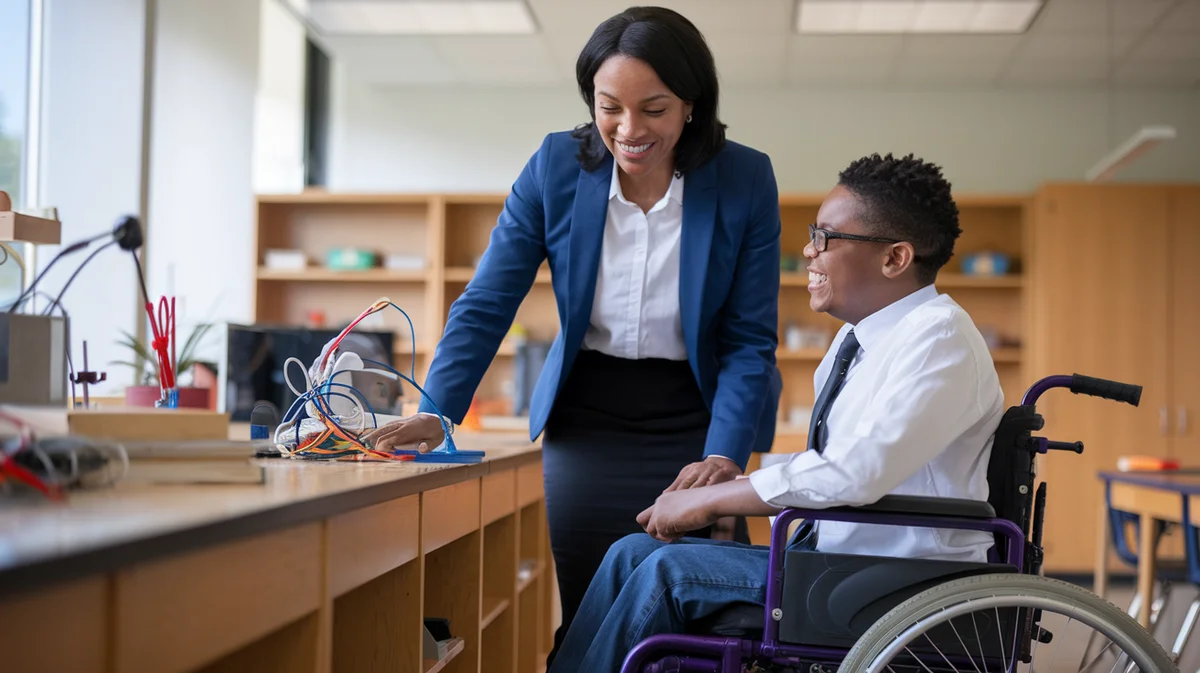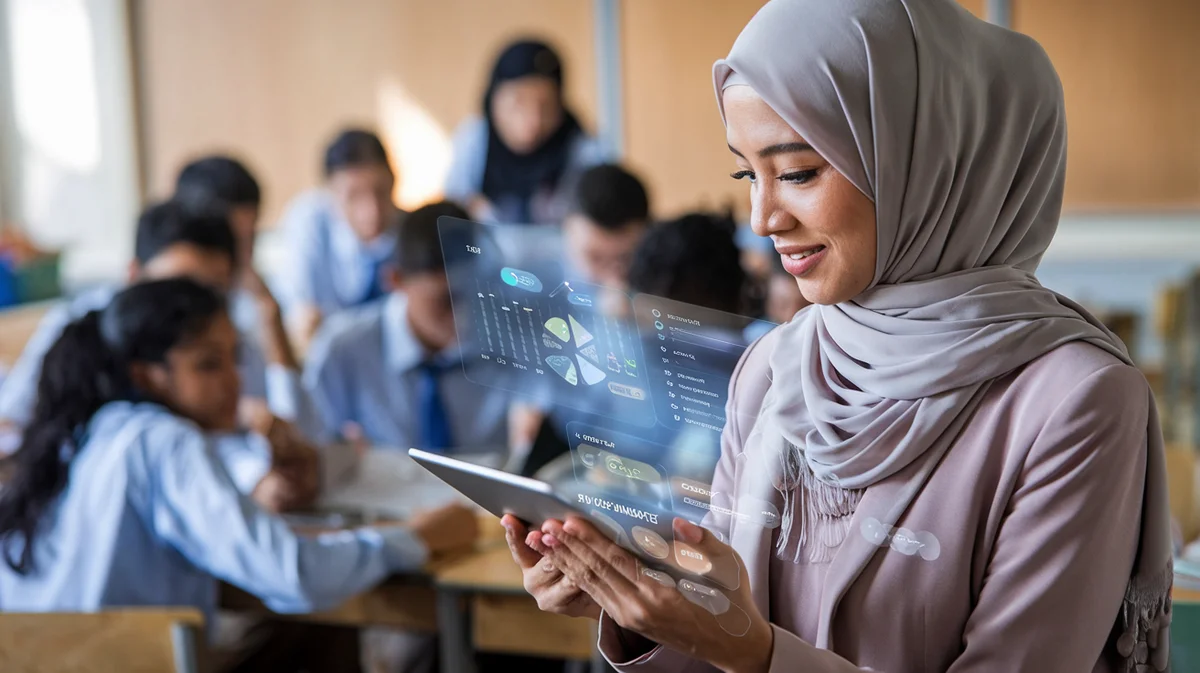Government Funding for STEM Equipment: Empowering Future-Ready Education


wp:paragraph
Government funding for STEM equipment is rapidly transforming educational landscapes across Europe, MENA, and CIS regions. As we at UNOWA continue to empower institutions, educators, and students with innovative, inclusive, and curriculum-aligned solutions, understanding the dynamics of STEM education funding is crucial for shaping a future-ready, equitable learning environment.
/wp:paragraph
wp:heading {"level":2}
The Global Landscape of STEM Education Funding
/wp:heading
wp:heading {"level":3}
Key Facts and Recent Developments
/wp:heading
wp:list
- The World Bank leads global education financing, managing a $26.5 billion portfolio that benefits over 305 million students in 85 countries (World Bank Education Overview).
- The Global Partnership for Education (GPE) has delivered $5.4 billion in grants, with a focus on low-income and marginalized communities (GPE Results Report).
- International organizations like UNESCO and UNICEF are driving large-scale STEM initiatives, with recent grants targeting digital transformation and inclusive education (UNESCO STEM Education).
/wp:list
wp:heading {"level":3}
Regional Focus: EU, MENA, and CIS
/wp:heading
wp:heading {"level":4}
European Union (Bulgaria, Malta, Poland, Latvia, Lithuania, Estonia, Serbia)
/wp:heading
wp:paragraph
EU member states benefit from a blend of EU structural funds and national programs dedicated to modernizing STEM education. Funding is closely tied to curriculum alignment with EU digital and STEM competency frameworks, ensuring that investments support hands-on, inquiry-based learning and inclusivity. For example, the European Social Fund Plus (ESF+) prioritizes digital skills and STEM for all learners, including girls and students with disabilities (European Commission: ESF+).
/wp:paragraph
wp:heading {"level":4}
MENA (Saudi Arabia, UAE, Qatar, Oman)
/wp:heading
wp:paragraph
National STEM strategies are central to economic diversification plans, such as Saudi Vision 2030 and the UAE’s National Innovation Strategy. Governments are investing in advanced STEM labs, robotics kits, and digital platforms, with a strong focus on gender equity and preparing students for the future workforce. These efforts are often supported by partnerships with international organizations and the private sector.
/wp:paragraph
wp:heading {"level":4}
CIS (Kazakhstan, Uzbekistan, Armenia, Moldova, Azerbaijan, Kyrgyzstan, Georgia)
/wp:heading
wp:paragraph
CIS countries leverage partnerships with the World Bank, UNESCO, and GPE to secure funding for STEM infrastructure and teacher training. Programs often prioritize rural and disadvantaged regions, aiming to reduce educational disparities and align with international STEM standards.
/wp:paragraph
wp:heading {"level":2}
Inclusivity and Curriculum Alignment: A Prerequisite for Funding
/wp:heading
wp:paragraph
International funding and government policies increasingly require that investments in STEM equipment address the needs of marginalized groups. This includes girls, ethnolinguistic minorities, and students with disabilities. Curriculum reforms are often a prerequisite for funding, ensuring that new equipment supports modern pedagogical approaches and aligns with both national and international STEM standards.
/wp:paragraph
wp:quote
“UNESCO supports national capacities to deliver gender-responsive STEM education. With financial support from partners, UNESCO is building inclusive and equitable STEM learning environments.”
/wp:quote
wp:paragraph
At UNOWA, we design and deliver educational systems that are adaptable to national standards and ready for large-scale impact. Our solutions, such as MIKKO for inclusive education and Ulabs for STEM innovation, are built to meet these evolving requirements.
/wp:paragraph
wp:heading {"level":2}
Large-Scale Impact: Best Practices and Proven Strategies
/wp:heading
wp:heading {"level":3}
Scalability and Evidence-Based Approaches
/wp:heading
wp:paragraph
Programs funded by the World Bank and GPE are designed for scalability. Successful pilot projects are often expanded nationally, maximizing reach and impact. Funding is closely linked to monitoring and evaluation, with data-driven adjustments ensuring effectiveness.
/wp:paragraph
wp:heading {"level":3}
Public-Private Partnerships
/wp:heading
wp:paragraph
Many countries are leveraging partnerships with technology companies to co-fund and supply STEM equipment. This approach ensures sustainability, access to the latest technology, and ongoing support for educators.
/wp:paragraph
wp:heading {"level":3}
Professional Advice for Securing and Utilizing Funding
/wp:heading
wp:list
- Build robust monitoring and evaluation frameworks to demonstrate impact and scalability.
- Foster multi-stakeholder partnerships, including with the private sector and civil society, to enhance resource mobilization and sustainability.
- Prioritize teacher training and ongoing support to maximize the effective use of new STEM equipment.
/wp:list
wp:heading {"level":2}
Challenges in STEM Education Funding
/wp:heading
wp:paragraph
Despite significant progress, several challenges persist:
/wp:paragraph
wp:list
- Sustainability: Ensuring ongoing maintenance and teacher training, particularly in rural or under-resourced areas, remains a key concern.
- Equity Gaps: Disparities persist, especially for girls and students in remote regions, despite targeted funding.
- Bureaucracy: Complex application and reporting requirements can hinder access to international funds, especially for smaller or less experienced education ministries.
/wp:list
wp:heading {"level":2}
Opportunities: Unlocking the Potential of STEM Funding
/wp:heading
wp:heading {"level":3}
Leveraging International Partnerships
/wp:heading
wp:paragraph
Engaging with organizations like UNESCO, the World Bank, and GPE increases access to technical expertise and funding. These partnerships also facilitate knowledge exchange and capacity building.
/wp:paragraph
wp:heading {"level":3}
Aligning with National Priorities
/wp:heading
wp:paragraph
Successful funding applications clearly demonstrate alignment with national STEM strategies and educational reform agendas. At UNOWA, we work closely with ministries and curriculum authorities to ensure our solutions are tailored to local needs and priorities.
/wp:paragraph
wp:heading {"level":3}
Inclusive Design
/wp:heading
wp:paragraph
Programs that embed inclusivity from the outset — such as gender-responsive STEM education — are more likely to receive funding and achieve lasting impact. Our commitment to inclusive education ensures that every child, regardless of ability, has access to quality STEM learning experiences.
/wp:paragraph
wp:heading {"level":2}
Case Studies: Regional Approaches to STEM Equipment Funding
/wp:heading
Region
Key Funding Sources
Focus Areas
Challenges
Opportunities/Best Practices
EU (Bulgaria, etc.)
EU funds, national budgets
Curriculum alignment, inclusivity
Bureaucracy, equity gaps
EU frameworks, public-private partnerships
MENA
National funds, World Bank, UNESCO
STEM labs, gender equity
Sustainability, access
National strategies, innovation hubs
CIS
World Bank, GPE, UNESCO
Rural access, teacher training
Maintenance, disparities
International partnerships, pilot scaling
wp:heading {"level":2}
UNOWA’s Role in Transforming STEM Education
/wp:heading
wp:paragraph
With over 15 years of experience and a track record of delivering more than 300 national projects, we are at the forefront of developing cutting-edge educational solutions. Our comprehensive range of products and services — including inclusive education systems, STEM innovation labs, curriculum-aligned content, and professional training — are designed to empower institutions, educators, and students.
/wp:paragraph
wp:paragraph
We believe every child deserves access to quality education, regardless of their abilities. By partnering with governments, international organizations, and local stakeholders, we are helping to create a better world through modern education tools.
/wp:paragraph
wp:heading {"level":2}
FAQ: Government Funding for STEM Equipment
/wp:heading
wp:paragraph
Q: What are the main sources of government funding for STEM equipment? A: Major sources include national education budgets, EU structural funds, and international organizations such as the World Bank, UNESCO, and the Global Partnership for Education.
/wp:paragraph
wp:paragraph
Q: How can schools and ministries improve their chances of securing STEM education funding? A: Align proposals with national priorities, demonstrate inclusivity, build strong monitoring frameworks, and engage in multi-stakeholder partnerships.
/wp:paragraph
wp:paragraph
Q: What challenges do schools face in utilizing STEM equipment funding effectively? A: Key challenges include ensuring sustainability, providing ongoing teacher training, and addressing equity gaps in access to equipment.
/wp:paragraph
wp:paragraph
Q: Why is inclusivity important in STEM education funding? A: Inclusive approaches ensure that all students — including girls, minorities, and those with disabilities — benefit from STEM investments, leading to more equitable and impactful outcomes.
/wp:paragraph
wp:paragraph
Q: How does UNOWA support institutions in accessing and utilizing STEM funding? A: We offer tailored solutions, expert consultation, and ongoing support to help institutions align with funding requirements and maximize the impact of their STEM investments.
/wp:paragraph
wp:paragraph
For more insights and to explore how we can help transform your educational systems, visit UNOWA.
/wp:paragraph
wp:paragraph
References:
/wp:paragraph
wp:list
- World Bank Education Overview
- Global Partnership for Education Results
- UNESCO STEM Education
- European Commission: ESF+
/wp:list








